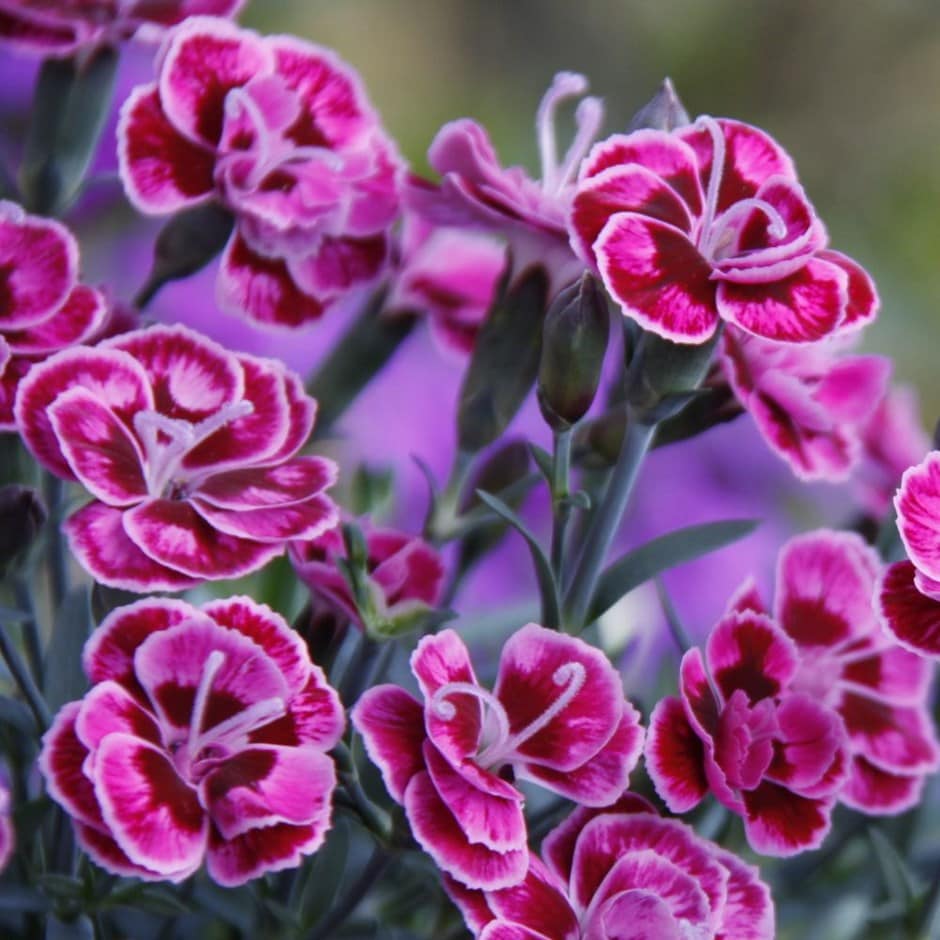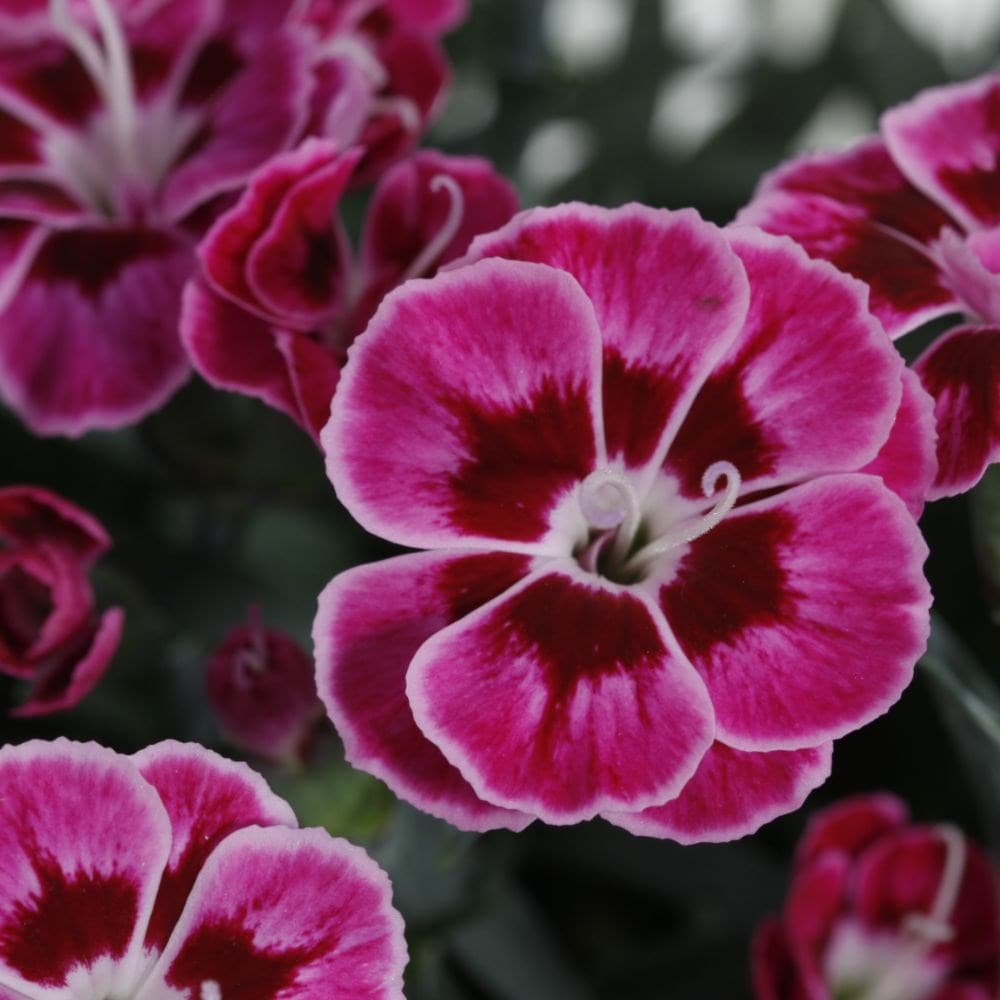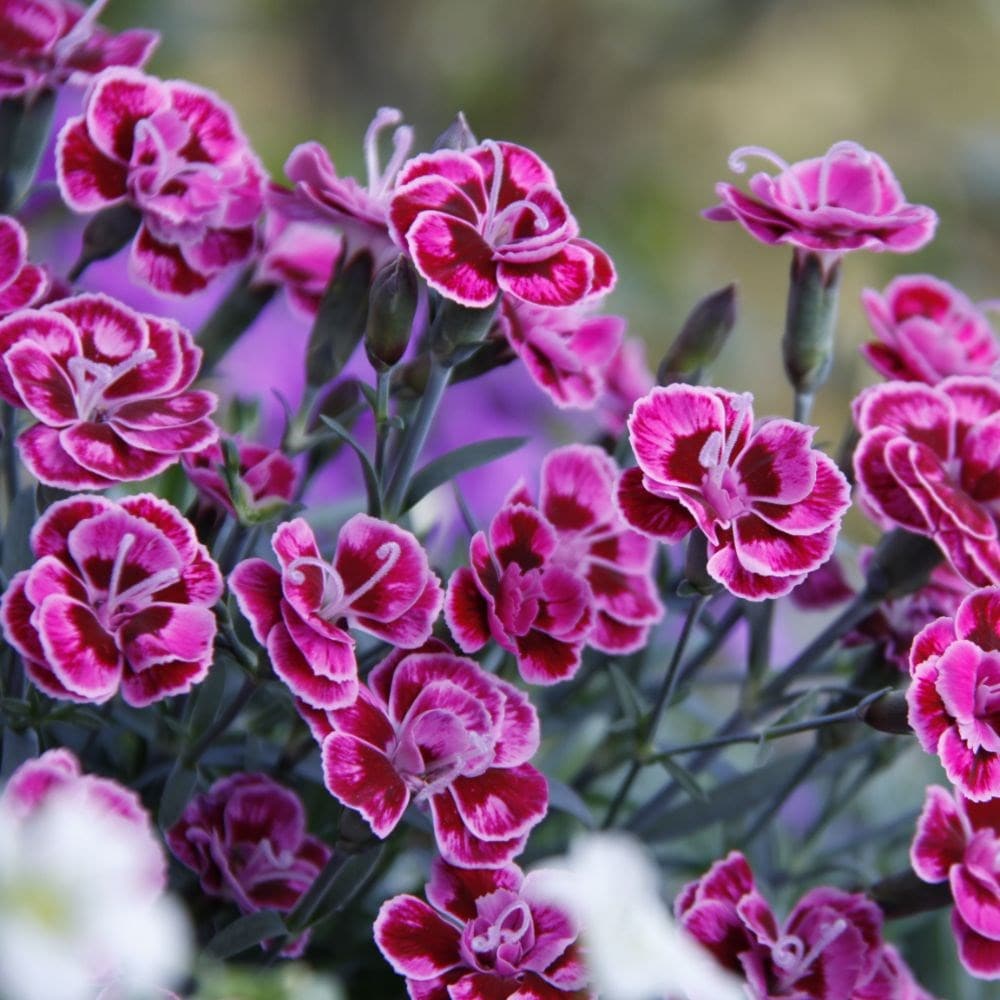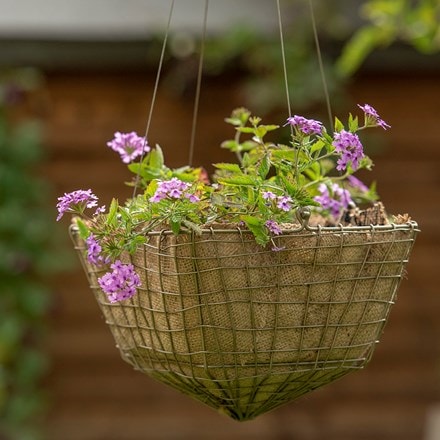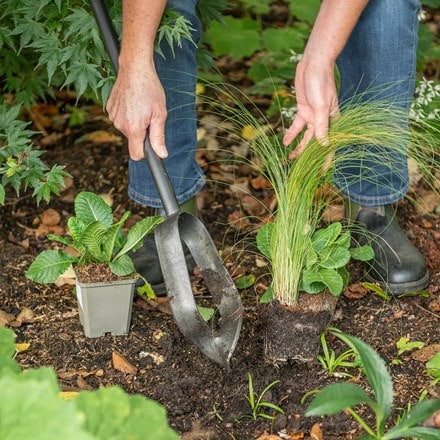Dianthus Diantica Purple Wedding ('Kledg18274') (PBR)
garden pinks / dianthus (syn. Dianthus Purple Wedding)
Eventual height & spread
Dianthus Diantica Purple Wedding ('Kledg18274') (PBR)
garden pinks / dianthus (syn. Dianthus Purple Wedding)
- 9cm pot
- £6.99
- available to order from late autumn
- 2 + 1 FREE 9cm pots
- £13.98 £4.66 each
- available to order from late autumn
Delivery options
- Standard £5.99
- Position: full sun
- Soil: moderately fertile, moist but well-drained soil or general-purpose compost for containers
- Rate of growth: average
- Flowering period: June to September
- Hardiness: fully hardy
Appearing in abundance throughout the summer, the bicoloured blooms of this low-growing pink provide a long season of interest throughout the summer. Delivered in flower, they will give instant colour to your pots and baskets. When the display finishes you can plant dianthus into alpine beds and rockeries, or use them to edge the front of a sunny border where you will be able to enjoy their spicy perfumed blooms the following year.
Prefers soil enriched with well-rotted manure or garden compost and an application of a balanced fertiliser in spring. Dianthus should be trimmed back lightly after flowering to promote new growth at the base of the plant. Prune more closely in spring, as new shoots emerge to maintain a tidy shape.
Dianthus thrives in well-drained, alkaline soil enriched with well-rotted manure or garden compost. When planting, choose a sunny location with good air circulation. Space plants 30cm (12in) apart to allow for growth. Water deeply but infrequently (rather than little and often) to encourage deep root development, especially during dry spells.
In spring, apply a balanced granular fertiliser to promote healthy growth and abundant blooming. Mulch around the plants to retain moisture and suppress weeds, but keep the mulch away from the plant's crown to prevent rot. In areas with harsh winters, provide a light mulch for protection.
Deadhead regularly to extend the blooming period and maintain a tidy appearance. After the main flowering period, trim back lightly to promote new growth at the base of the plant.
In spring, as new shoots emerge, prune more closely to maintain a compact, tidy shape. This pruning regime helps rejuvenate the plant and encourages fuller, more vigorous growth.
In spring, apply a balanced granular fertiliser to promote healthy growth and abundant blooming. Mulch around the plants to retain moisture and suppress weeds, but keep the mulch away from the plant's crown to prevent rot. In areas with harsh winters, provide a light mulch for protection.
Deadhead regularly to extend the blooming period and maintain a tidy appearance. After the main flowering period, trim back lightly to promote new growth at the base of the plant.
In spring, as new shoots emerge, prune more closely to maintain a compact, tidy shape. This pruning regime helps rejuvenate the plant and encourages fuller, more vigorous growth.
- Humans/Pets: Skin allergen
